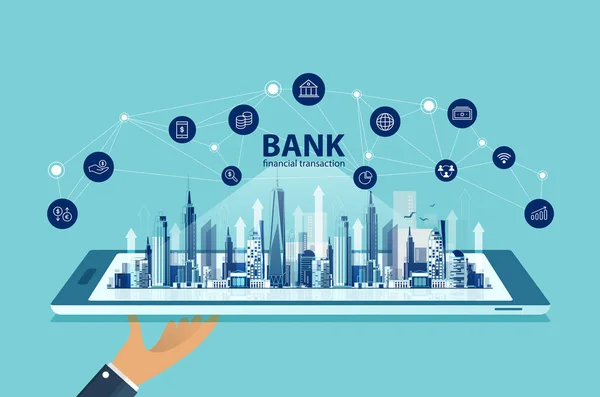The world of banking is standing on the precipice of a revolution, with cryptocurrencies carving out new paths and challenging traditional financial models. As digital currencies grow in popularity and acceptance, the banking sector is grappling with the impact of this disruptive technology. From Decentralized Finance (DeFi) to regulatory hurdles, the intersection of cryptocurrencies and the future of banking presents a complex tapestry that will shape the economic landscape for years to come. In this article, we will delve into the various facets of how cryptocurrencies are altering the banking industry, exploring the potential for a new era of financial services.
Exploring Crypto’s Banking Impact

Cryptocurrencies have introduced a radical paradigm within the banking sector, promising more than just an alternative to fiat currencies. They offer a new way of thinking about financial autonomy, security, and inclusivity. The banks’ monopoly on financial services is being challenged by crypto’s inherent features:
- Decentralization: By removing the need for central authorities, cryptocurrencies are redefining who holds power in financial transactions.
- Security: Blockchain technology provides an immutable ledger, making fraudulent activities more difficult.
- Accessibility: Crypto has the potential to offer unbanked populations access to financial services.
- Efficiency: Reduced need for intermediaries can lower transaction costs and increase speed.
While some view cryptocurrencies as a threat to traditional banking, others see them as an opportunity for banks to innovate and evolve.
The Rise of Decentralized Finance

Decentralized Finance, or DeFi, represents a shift from the traditional centralized financial systems to peer-to-peer finance enabled by decentralized technologies built on the Ethereum blockchain. DeFi’s core ethos is to create an open financial system that minimizes the need for trusted intermediaries. The rise of DeFi has been meteoric with several implications:
- Permissionless: Unlike traditional banking, DeFi protocols are open to anyone with Internet access.
- Transparency: All transactions are visible on the blockchain, ensuring full transparency.
- Programmability: Smart contracts automate transactions and enforce terms without human intervention.
- Interoperability: DeFi protocols and applications can work together seamlessly.
- Yield Farming: Users can earn returns on their cryptocurrencies by lending or staking them within DeFi platforms.
- Composability: DeFi apps can be composed and integrated like Lego pieces to create complex financial services.
DeFi’s growth continues to attract attention from investors and traditional financial institutions alike.
Traditional Banks vs. Digital Currency

The juxtaposition of traditional banks and digital currencies raises important questions about the future of finance. Banks are centralized institutions that have been the cornerstone of the financial system, while digital currencies represent a decentralized and often borderless alternative. Here is a comparison of key aspects:
| Aspect | Traditional Banks | Digital Currencies |
|---|---|---|
| Operation | Centralized | Decentralized |
| Currency Representation | Fiat currency | Digital assets/tokens |
| Transaction Oversight | Financial regulators | Distributed network consensus |
| User Access | Subject to KYC and geography | Generally borderless |
| Innovation Pace | Generally slow | Rapid and community-driven |
| Security | Institutional measures | Cryptographic security |
This table illustrates the marked differences in operation and philosophy between the two systems.
Crypto’s Influence on Payment Systems

Cryptocurrencies are revolutionizing payment systems by offering an alternative to traditional banking channels. The influence of crypto on payment systems can be seen in several areas:
- Cross-border Transactions: Cryptocurrencies are making international transfers faster and less expensive by eliminating the need for currency conversion and reducing banking fees.
- Microtransactions: The ability to handle small transactions efficiently opens up new models for content monetization and charitable donations.
- Merchant Adoption: As more merchants accept cryptocurrencies, the utility of digital currencies in everyday transactions increases.
- Mobile Payments: Cryptocurrency wallets on smartphones allow for easy peer-to-peer transactions without the need for banking infrastructure.
Additionally, crypto payment gateways are integrating with existing commerce platforms, enabling seamless transactions using digital currencies.
Regulatory Challenges for Cryptobanks

Cryptobanks, which blend traditional banking services with the innovation of cryptocurrency, face numerous regulatory challenges due to the novel nature of digital assets. Regulators are tasked with protecting consumers while encouraging financial innovation:
- Compliance: Cryptobanks must adhere to Know Your Customer (KYC) and Anti-Money Laundering (AML) laws.
- Licensing: Acquiring the appropriate licenses to operate as a financial institution is complex and varies by jurisdiction.
- Consumer Protection: Ensuring the safety of customer funds and transactions is paramount.
- Taxation: Clarifying the tax status of digital currencies and transactions is an ongoing challenge.
- Stability and Security: Regulators are concerned with the stability of the cryptocurrency market and the security of blockchain technology.
- International Coordination: Cross-border cryptocurrency transactions complicate the establishment of a unified regulatory framework.
Addressing these issues is critical for the legitimization and integration of cryptobanks into the broader financial landscape.
The Future: Coexistence or Conflict?

As the banking industry continues to grapple with the rise of cryptocurrencies, the question of whether the future will be marked by coexistence or conflict remains open. Potential scenarios include:
- Integration: Traditional banks may adopt blockchain and cryptocurrency technologies to enhance their services.
- Competition: Banks and cryptocurrencies could compete for market dominance, potentially to the detriment of one or the other.
- Innovation: Banks might leverage the competition as a catalyst for innovation, embracing the best aspects of both systems.
- Regulatory Evolution: Legal frameworks may evolve to accommodate both traditional banking and cryptocurrencies more harmoniously.
- Consumer Preference: Ultimately, consumer adoption will play a significant role in determining the trajectory of the relationship between crypto and banking.
- Market Dynamics: The market may see a stratification with niche services being offered by both banks and blockchain-based entities.
The interplay between these factors will determine the shape of the future financial landscape.
In conclusion, the convergence of cryptocurrencies and banking is forging a new frontier in the world of finance. While challenges and uncertainties abound, the potential for innovation and transformation is undeniable. Whether we witness a harmonious integration or a spirited competition, the impact of cryptocurrencies will undeniably be a driving force in shaping the future of banking. As the industry evolves, staying informed and adaptable will be crucial for both financial institutions and consumers navigating this ever-changing terrain.



I’m really excited to see how crypto will change our banking system! It’s great to learn about the possibilities for more security and faster transactions. Thanks for explaining it in an easy-to-understand way!
Great read! The part about DeFi really opened my eyes to the possibilities of banking without traditional institutions. Thanks for explaining it in an easy-to-understand way!
I disagree with the implication that banks are slow to innovate. Banks are adopting new tech all the time. They’re cautious because they have to protect consumers’ money, not like the wild west of crypto.
The article overlooks the environmental impact of cryptocurrencies, especially Bitcoin. How sustainable is this so-called ‘financial revolution’ if it’s contributing to our planet’s decline?
The author seems to ignore the numerous scams and frauds in the crypto space. How can we talk about integrating crypto into traditional banking when there’s so much risk involved? Security issues need to be addressed first.
This article is overly optimistic about crypto. Traditional banking has survived for centuries for good reason. Crypto isn’t regulated enough and is too volatile to be taken seriously as the future of banking.
Really insightful article! It’s fascinating to see how crypto could change the way we handle money every day. Can’t wait to see what the future holds!
Thank you for this informative post! The potential for banking to evolve with cryptocurrencies is really exciting. Looking forward to more updates on this topic.
Loved the article! The comparison between traditional banks and digital currencies is super helpful. It’s clear that innovation is key to staying ahead.